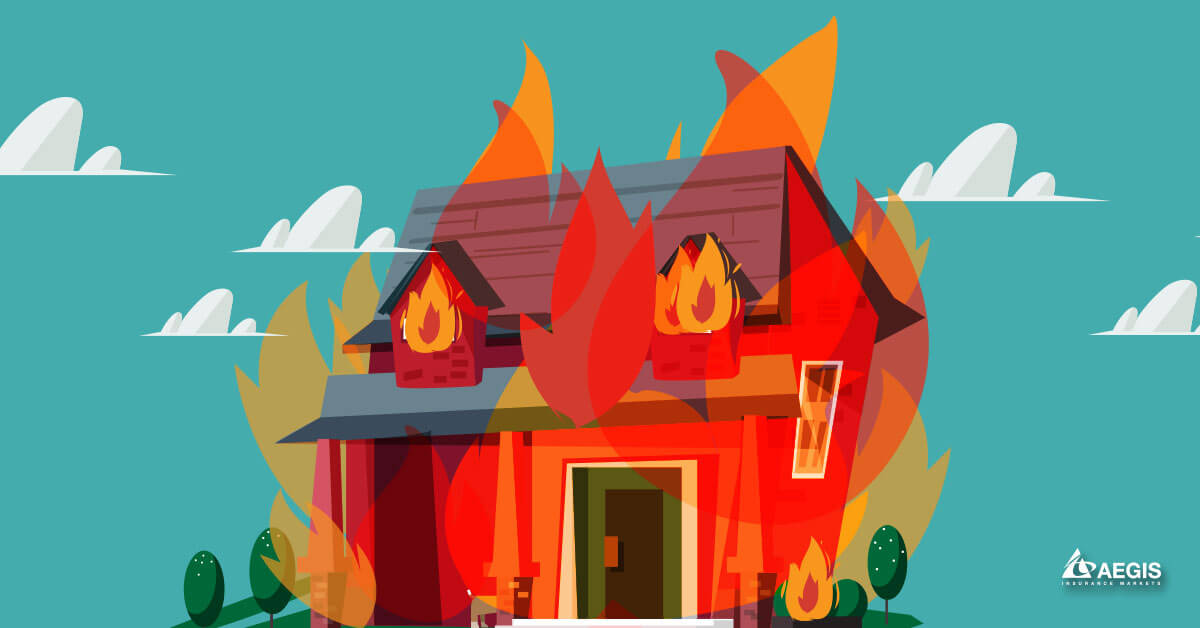Californians who live in high-risk fire zones have their share of challenges protecting their homes from seasonal blazes, not the least of which is remaining insured.
After facing mounting wildfire losses – more than $12 billion in 2018 alone – many property insurers are deciding that issuing homeowners’ insurance in certain areas of California is just too risky.
Here’s what you need to know about homeowners’ insurance nonrenewals:
Insurers Have the Right to Not Renew Your Policy
There’s currently no law prohibiting insurers from opting not to renew your homeowners’ policy if they reach the conclusion that your home is too risky to insure.
But you do have specific rights when it comes to nonrenewals.
- The notice of nonrenewal must be sent at least 45 days prior to the policy expiration.
- The notice must include the reason for nonrenewals and contact information for a representative of the insurer.
- A statement indicating that, if you’ve contacted the insurer to discuss the nonrenewal, you have the right to have the matter reviewed by the CA Dept. of Insurance.

A NonRenewal Doesn’t Mean You’re Uninsurable
Just because one insurer decides not to renew your policy doesn’t mean you’ll be unable to get coverage from another.
Some insurers specialize in high-risk homeowners’ insurance.
At Aegis Insurance Markets, we have built relationships with carriers who have an appetite for high-risk homes. We’ve had to – with our location being in the Sierra Nevadas we’ve had plenty of clients over the years with homes in high-risk zip codes.
And we’re committed to leaving no home uninsured.
We know exactly who to call to get you covered if another insurer decides your home is too risky to insure.
If you’ve received a nonrenewal notice, don’t panic.
Call your insurance broker and ask them to shop around for high-risk insurance for your home.
Nonrenewals vs Cancellations
An insurance policy nonrenewal isn’t the same as a cancellation.
Insurers can’t cancel a policy that’s been in place for over 60 days, unless:
- You failed to pay the premium
- You committed fraud or serious misrepresentation on your application
Nonrenewals are different. Either you or your insurer can decide not to renew your policy when it expires.
Thousands of CA Homes are at Risk
You may be surprised to find how many homes in California are considered to be in a high-risk fire zone.
A report from CA Insurance Commissioner Dave Jones shows that 25% of housing is in high or very high risk in nearly half of CA counties.
Homes in the Wildlife Urban Interface (WUI) – areas where homes are built in or near wildland vegetation – are at the greatest risk of wildfire damage.
The WUI isn’t a specific place. Rather, it’s a set of conditions that can exist in nearly every community, ranging from major subdivisions with proximity to fire-prone vegetation to a lone home on an open range.
According to researchers, the WUI is the fastest growing land use type in the U.S.
From 1990 to 2010, the number of new homes built in the WUI grew 41%. One-third of all homes in the U.S. are now located in areas that are near or mingle with forests and grasslands.
Is your community at risk? See CalFire’s entire list of at-risk communities.
In 2018, more than 1.3 million acres were destroyed by 6,431 combined wildfires up and down the state of California. When two fires – the Mendocino Complex and the Carr fire – merged, the resulting damage or destruction of 8,800 homes, 329 businesses, and 800 private or commercial autos was devastating, to say the least.
The more than 10,000 insurance claims from these two fires totalled $845 million in losses.


Protecting High-Risk Homes In CA: The Wildfire Survival Guide Infographic
California wildfires destroyed thousands of homes and businesses this year. Find out how to protect your home and belongings against the threat of wildfire.
Read Blog >>

CA Passes Bill to Help Homeowners
In September 2018, California passed Senate Bill No. 824 to protect fire victims.
SB824 increases protections for wildfire survivors. It prohibits insurers from canceling or refusing to renew a residential property insurance policy for one year after the declaration of a state of emergency in an area where a wildfire has occurred.
"'Will I still have insurance?' is not a question homeowners should have to face immediately after a wildfire disaster," said Senator Ricardo Lara (D-Bell Gardens). “SB824 will help us protect communities.”
SB824 also calls for the collection of important data that will provide a more comprehensive picture of the changes in a marketplace that should help insurers write more policies in the WUI without extending their risk profiles.
"As extreme wildfire risk grows, data from insurers detailing and documenting this risk has not kept pace," said Insurance Commissioner Dave Jones.
"Requiring insurers to provide wildfire risk data will give the Department of Insurance an important additional tool to help protect the 3.6 million Californians living in the Wildland Urban Interface. This data should help Californians living in high-risk areas access insurance products protecting their homes and communities."
What Can CA Homeowners Do?
Scientists predict the volume of acres that will be consumed by wildfires in an average year will soar 77% by the end of the century - that’s the equivalent of two extra Carr fires or roughly half-million more acres in an average year. That’s a lot of risk for insurers who do business in the Golden State.
Insurers aren’t in the business of non-renewing policies. They want your business.
But for some insurers, the risk of insuring a home in California is just too great.
Non-renewals happen. And in California, they’re happening more often to more people.
Tahoe/ Truckee-based Aegis Insurance Markets refuses to leave homes unprotected against the increasing dangers of wildfires in California. Call us for a quote and you won’t have to worry about whether or not you’re covered when the fire season starts again.